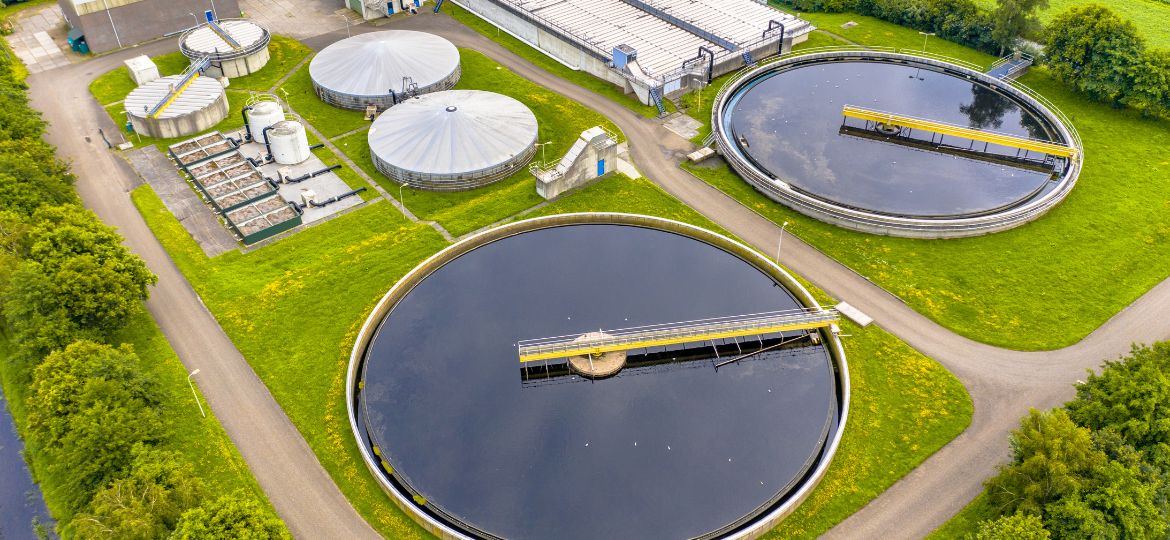
The Life Cycle of Water Infrastructure: From Planning to a Sustainable Future
Water infrastructure, such as desalination plants and treatment facilities, is fundamental to ensuring access to this vital resource. However, these systems are not permanent. From their initial conception to eventual decommissioning or renewal, they undergo a complex life cycle that involves strategic decision-making and technological challenges. Understanding each phase of this cycle, with an emphasis on sustainability and efficiency, is crucial to managing these assets optimally, minimizing environmental impact, maximizing performance, and ensuring long-term viability.
1. Planning and Design: Laying the Groundwork for the Future
Everything begins with identifying a need. Whether it is to support a growing population, address water scarcity, or improve water quality, the planning of new infrastructure must consider multiple factors, including:
- Water availability and quality in the region
- Short- and long-term demand projections
- Economic feasibility and financing
- Environmental and social impact, including land use and affected communities
Today’s planning strategies increasingly integrate sustainability criteria from the outset. Priority is given to designs that optimize energy consumption, reduce carbon footprints, and maximize the use of alternative water sources such as wastewater reuse.
2. Financing and Economic Viability: Driving Investment
Water infrastructure requires significant capital investment and robust financing models to ensure long-term viability. Common funding sources include:
- Public investment: Often financed by government budgets, multilateral funds, or international cooperation programs
- Public-private partnerships (PPPs): Models where private companies contribute capital and technical expertise in exchange for long-term operation or concession contracts
- Private financing: Especially common in the industrial sector, where companies may engage directly with specialized water operators
- Green bonds and sustainable finance: As sustainability becomes a priority, more projects are leveraging financial instruments aimed at supporting environmentally responsible initiatives
A sound financial approach not only ensures project feasibility but also improves operational efficiency and supports affordable end-user tariffs.
3. Construction and Implementation: Bringing Plans to Life
Once a project is approved, construction begins, often a multi-year effort with several key challenges:
- Material and energy consumption: Materials like cement and steel have a high environmental footprint. Alternatives include recycled materials and more efficient construction techniques
- Waste and emissions management: Construction generates solid waste and CO₂ emissions, requiring effective mitigation strategies
- Environmental impact: Projects can disrupt local ecosystems, making it essential to implement measures such as ecological corridors or compensation systems
This phase also involves integrating innovative technologies, such as sensors and automated control systems, to optimize performance from the outset.
4. Operation and Maintenance: The Core of the System
Once operational, water infrastructure requires continuous management to maintain efficiency and extend service life. Key considerations include:
- Energy efficiency: Particularly in desalination and treatment plants with high electricity demands, integrating renewable energy sources such as solar or wind is critical
- Monitoring and control: Technologies like artificial intelligence and the Internet of Things (IoT) help detect leaks, optimize processes, and reduce operating costs
- Waste management: The safe and sustainable disposal of sludge, brine, and other by-products is essential
- Water quality: Strict monitoring ensures compliance with health and environmental regulations
Strategic decisions on plant expansion or modernization are also made during this phase, especially in response to population growth or climate change.
5. Renewal, Repurposing or Decommissioning: An End or a New Beginning
No infrastructure lasts forever. Over time, materials degrade, technologies become outdated, and needs evolve. Several pathways are possible:
- Renovation and modernization: Upgrading equipment, integrating new technologies, or aligning with updated environmental standards
- Repurposing: Some facilities may be adapted for new uses, such as rainwater storage or green hydrogen production
- Decommissioning and recycling: When infrastructure reaches end of life, a sustainable dismantling process should be planned, recovering materials and minimizing hazardous waste
The current challenge lies in designing infrastructure with a circular economy mindset, facilitating future repurposing or recycling.
Almar Water Solutions’ Role in Building a More Sustainable Future
The life cycle of water infrastructure is a dynamic process requiring strategic planning, innovation, and a strong commitment to sustainability. In a world where water is an increasingly scarce resource, designing, operating, and upgrading facilities with an efficient and environmentally conscious approach is essential.
At Almar Water Solutions, we play a key role in this process by delivering expertise and innovative solutions across every stage of the infrastructure life cycle. From project development and financing to the operation and maintenance of desalination and treatment plants, we ensure that every initiative is efficient, sustainable, and accessible.
Through this work, we are helping secure a future where water is not only more reliably available, but also more resilient and sustainable. The question is no longer whether we can guarantee water access, but how we will do so intelligently and responsibly.

